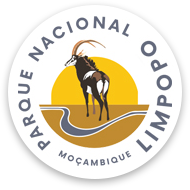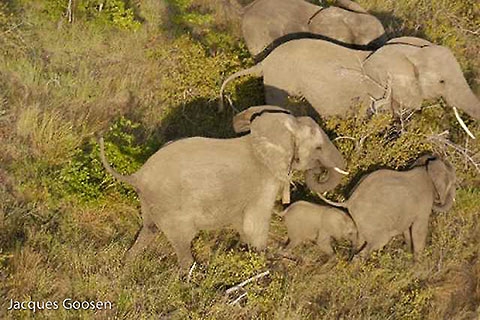Visitors to the Kruger National Park this year may be able to follow animals into Mozambique’s adjoining Limpopo Park now that a customs post has been completed on the South African side of the high-security boundary fence.
The thatched building is situated at the end of a good all-weather road at a point called Giriyondo, northeast of the Kruger’s Letaba camp.
But tourists will have to wait until the Mozambicans build a customs post on the other side of the fence before they can cross into the Limpopo Park. Arrie van Wyk ,the project coordinator tor the Limpopo Park, says it could still happen this year. Construction work has begun on thc Mozambican sicle.
It would be an event, for it would be the public’s first real taste of what the Great Limpopo Transfrontier Park, signed into existence with much fanfare almost three years ago, is actually about.
The two parks and Zimbabwe’s Gonarezhou were joined in 2002 to form the Great Limpopo Transfrontier Park.
The link-up with Gonarezhou has not yet happened. Community land on the Zimbabwean side still has to be acquired to create a corridor. It is also doubtftal that progress will be made while the country’s troubles persist, especially as it seems that animals in its game reserves are being killed.
One of the main purposes of transfrontier parks is to allow the animals and visitors to cross national boundaries. Some of Kruger’s animals, notably elephant and buffalo, have started doing just that.
In addition, nearly 3 000 head of game have been caught in the Kruger and translocated by truck to a 60 000 hectare enclosure in the Limpopo Park. A section of the enclosure’s fence will soon be removed to allow the animals to start making their way into the bigger Limpopo Park. Animals have to be translocated because the Mozambican park had little game left. The area served as a coutada or hunting ground under Portuguese colonial rule and, during the country’s protracted civil war, it was used by soldiers as a source of bush meat.
Those Kruger animals that have started crossing the border of their own accord have been doing so along a short section of the boundary northwest of Shingwedzi where the fence was removed in December 2002. Others have been crossing the border using gaps in the fence where it crosses rivers.
On a recent helicopter flight over the Limpopo Park, herds of these elephant, buffalo and other animals could be seen roaming calmly about.
One theory is that the elephant herds in particular have been signalled by those that had been translocated that it is safe once more to return to the area which once formed part ot their seasonal migratory routes, before the war and before the security fence was erected in 1976.
Animal movement across the border should increase when more sections of the security fence are removed, hopefully this year. But human traffic is likely to remain a trickle for some time after the border post opens.
At a million hectares, the Limgopo Park is about half the size ot the Kruger. But with the Kruger and hopefully one day Gonarezhou -constitutes what must surely be one of the best ecotourism destinations in the world.
It does not have much to offer by way of infrastructure. But therein lies its attraction. It is a vast wilderness of varying habitats untouched by human development.
From the air, a lone track could be seen winding through the bush. It was carved by the vehicles of a safari operator and probably a hunting outfit that operated in the region betore it was declared a reserve.
A road passes through the northern part ot the park, crossing the Limpopo River boundary at a place called Mapai, which is one of two entrances to the park trom the Mozambican side. The other is at Massingir Dam in the south.
There is a fairly large settlement in the north ot the park along the Limgopo River and another on the Olifants River, which runs through the Kruger and feeds the Massingir Dam. These, says Van Wyk, will probably be left where they are.
But a third community near the middle of the park in the basin ot the Shingwedzi River, which passes through the northern part ot the Kruger, will be given the option ot being resettled outside thc park.
If the villagers choose to remaln, they will be treated as an enclave community with restrictions placed on their activities. Van Wyk says basic facilities such as ablutions and a camp kitchen have been set up at Massingir. A trails camp is being prepared for guided walking safaris, and overnight spots, with ablutions and cooking facilities, are being planned for tour-wheel-drive safaris.
The intention is one day to construct a reasonably good road from the Giriyondo border post to Massingir Dam. Meanwhile, tourist travel in the Limpopo Park will be restricted to four-wheel-drive vehicles. The park has about 70 field rangers at various locations. They are armed and trained in anti-poaching work, and have a radio communication system.

